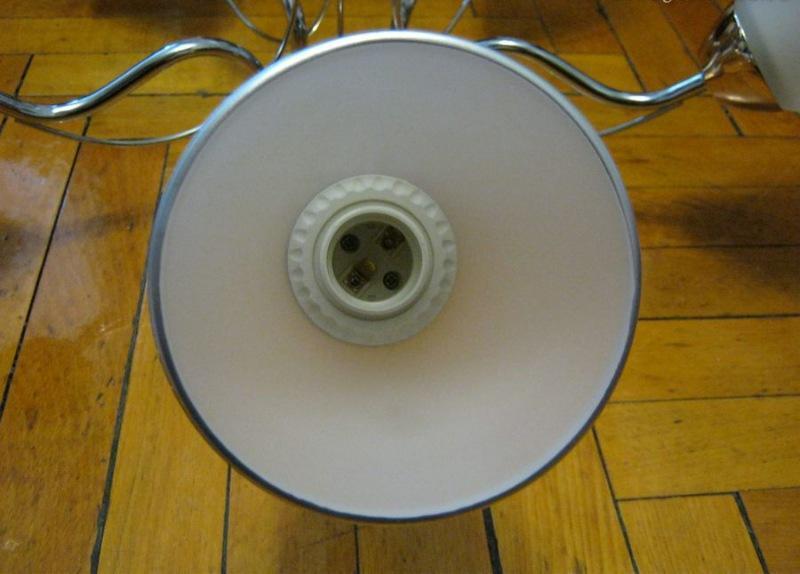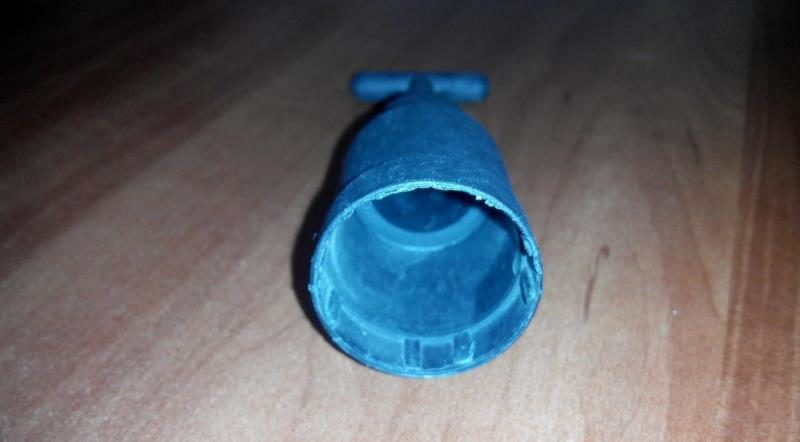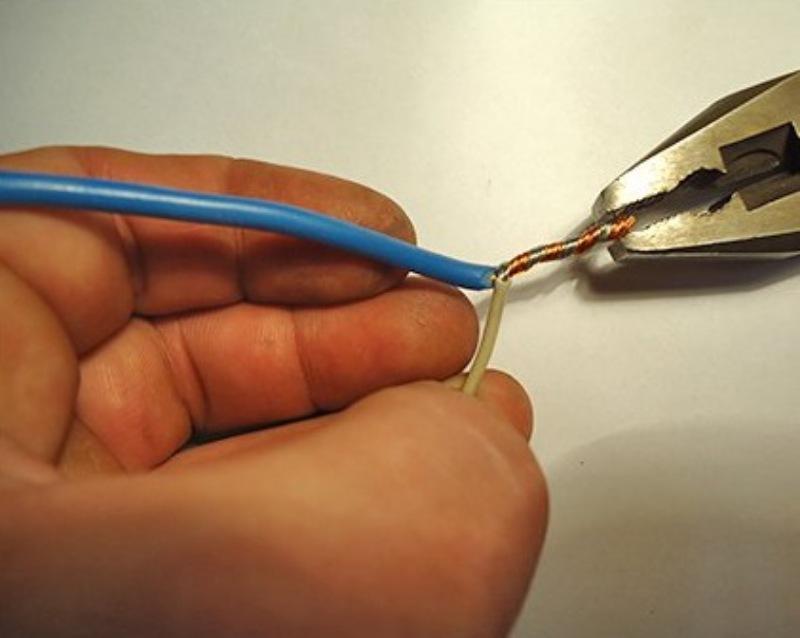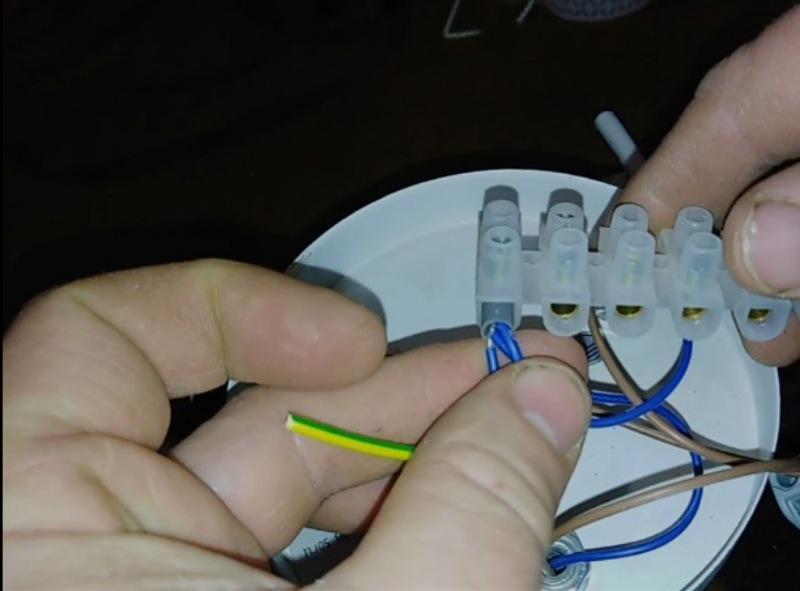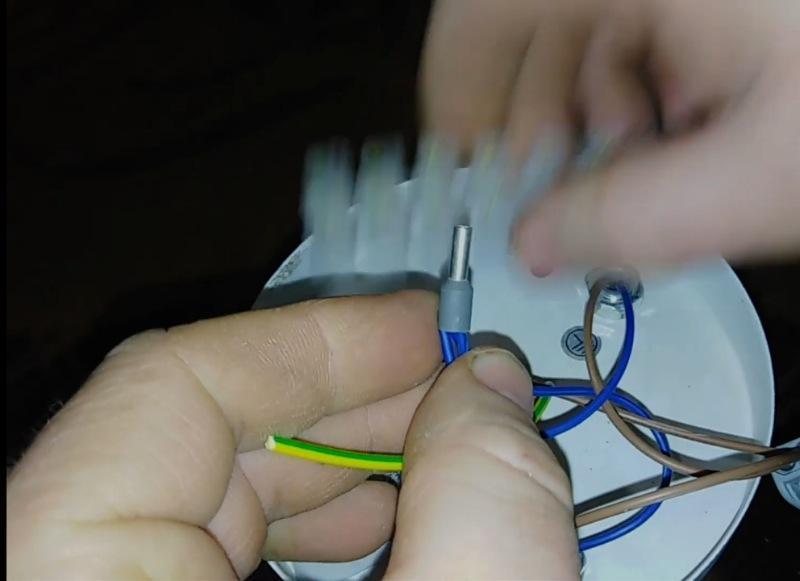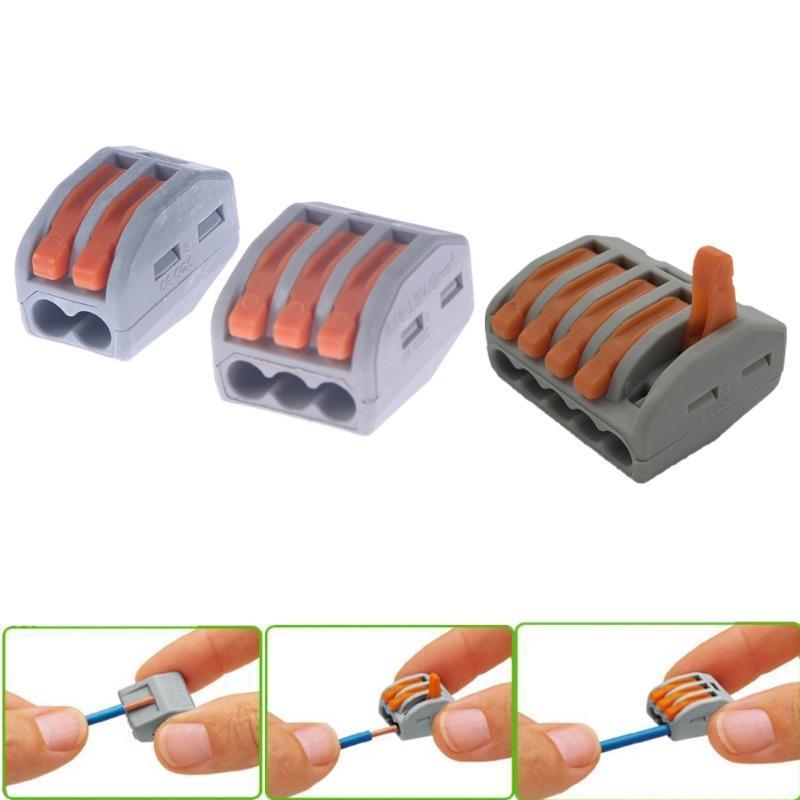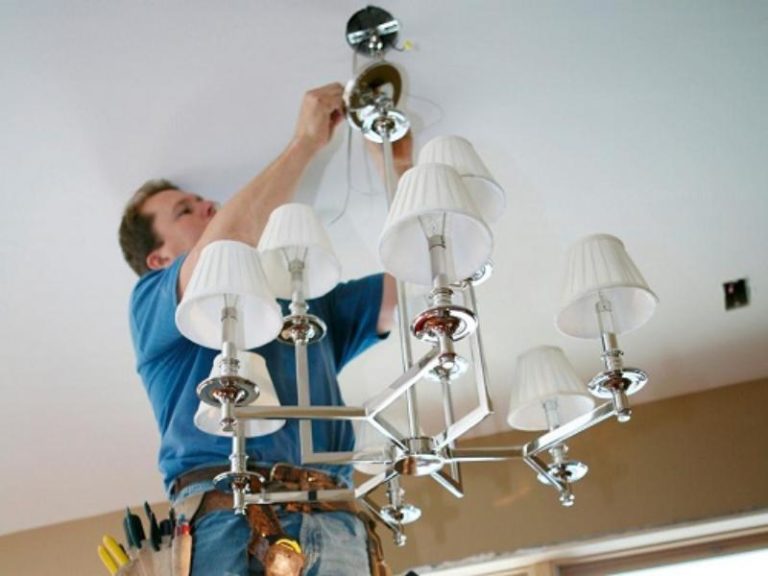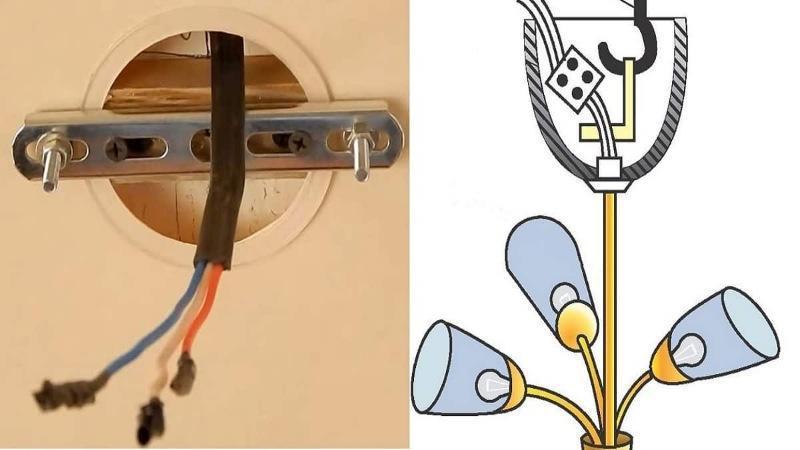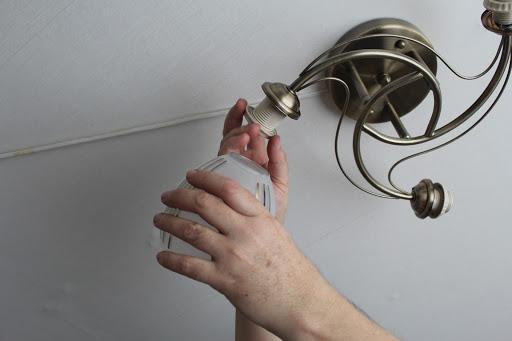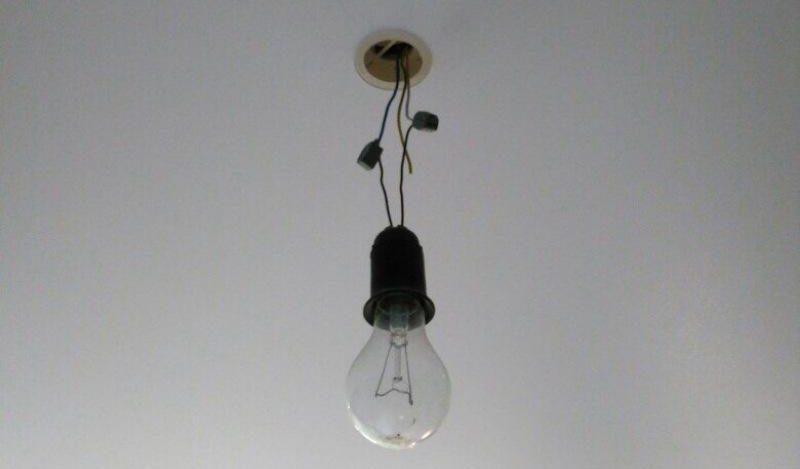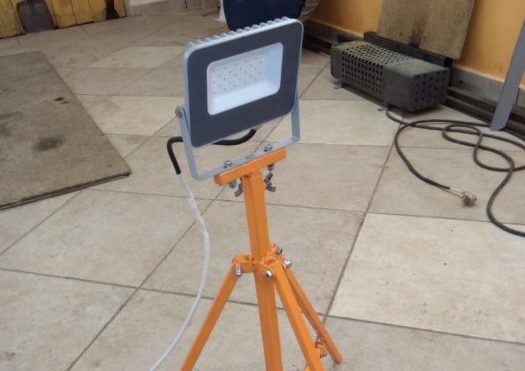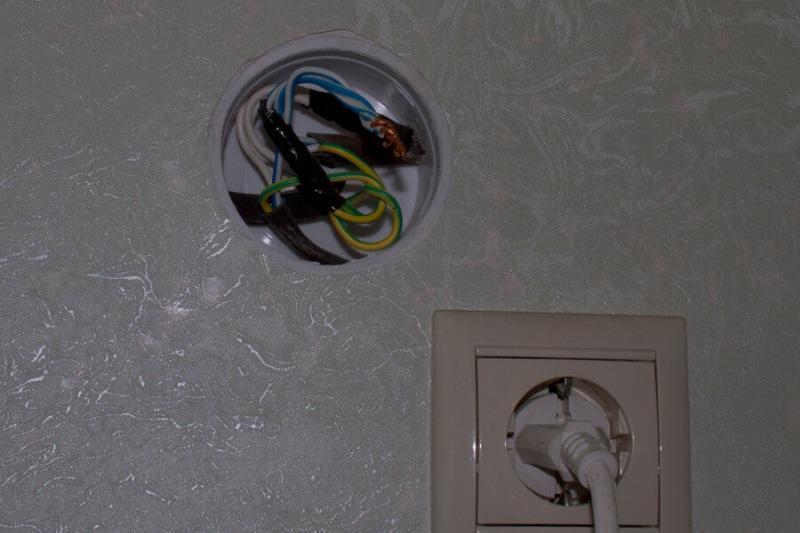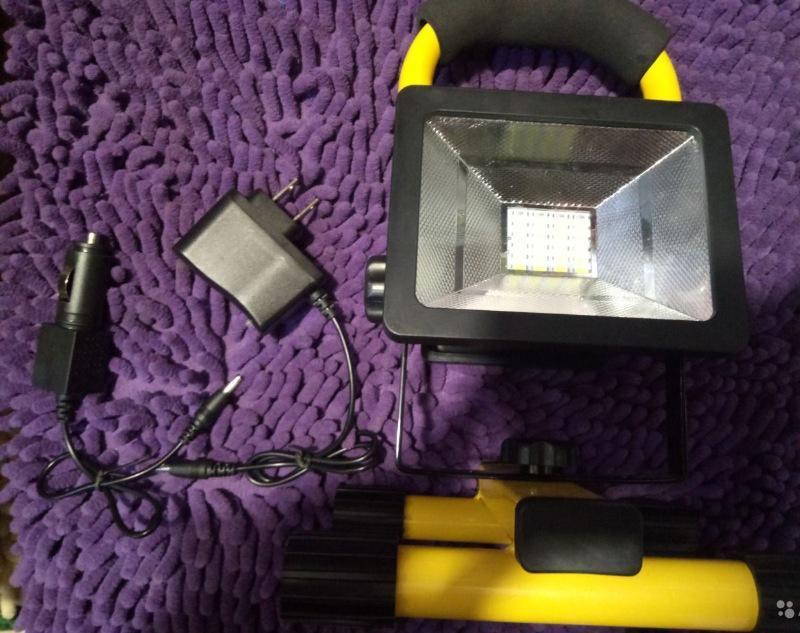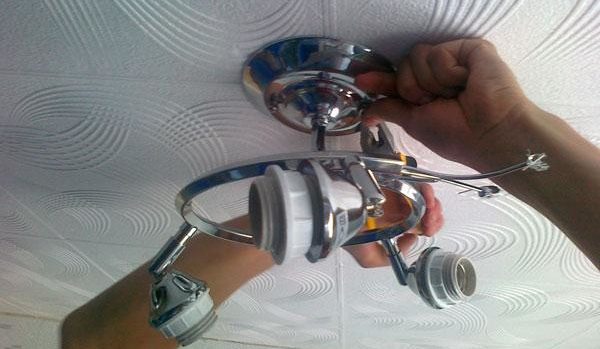How to remove a chandelier from the ceiling yourself
The process of dismantling lighting fixtures is not so complicated as to wait for an electrician, and, even more so, to spend money on what is quite realistic to do yourself. However, do not take on this task without tools, minimal skills in handling them and basic knowledge of safety precautions. This is especially important if you have not only to remove the chandelier in order to throw it away, but also the subsequent installation of a new device.
Preparing to replace
Regardless of the type of chandelier model and ceiling design, there are general rules that must be followed when carrying out any work with electrical wiring in the premises. First of all, it is necessary to de-energize the building.
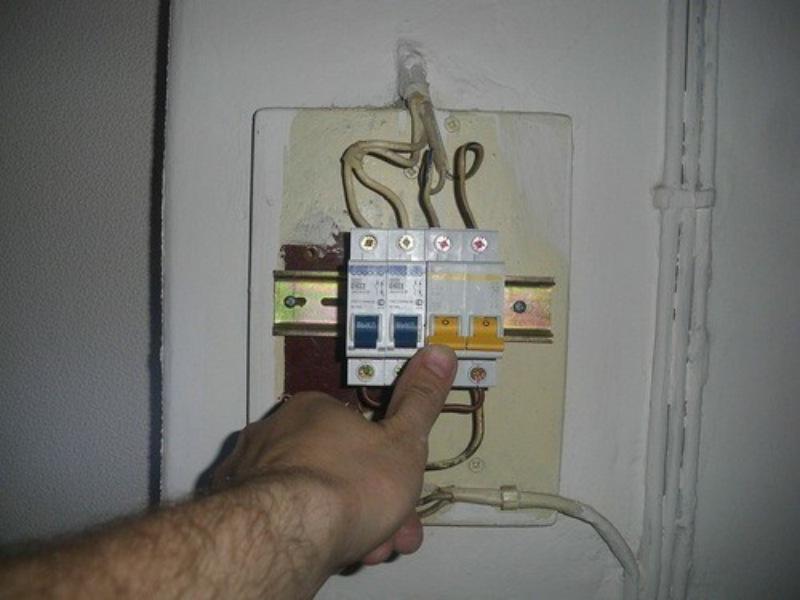
Because some faulty or homemade appliances have residual electricity, or the building has a parallel connection to autonomous power sources (diesel generators, solar panels, etc.) bypassing the circuit breakers.
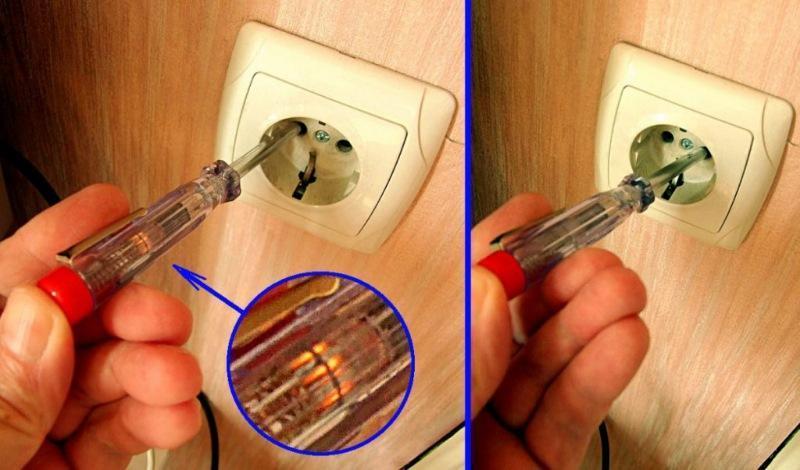
As a last resort, if there is no indicator screwdriver, any electrical appliance such as a television set, hair dryer, or iron will do the job.
If it is determined that there is no voltage in the network, you can get to work.
To change almost any chandelier on the ceiling will need:
- A stepladder, a stable chair, or better yet, a table;
- screwdriver (including indicator);
- pliers;
- knife;
- wire cutters;
- wrench set;
- a new chandelier with fasteners;
- protective dielectric gloves and goggles.
If the new fixture has a fundamentally different type of fastening, you may have to use a drill or impact drill.
Step-by-step instructions for disassembly
After turning off the electricity and making sure there is no voltage in the network, you need to set the stepladder next to the chandelier so that your knees rested on the top steps, and the lamp itself was in front of your face.
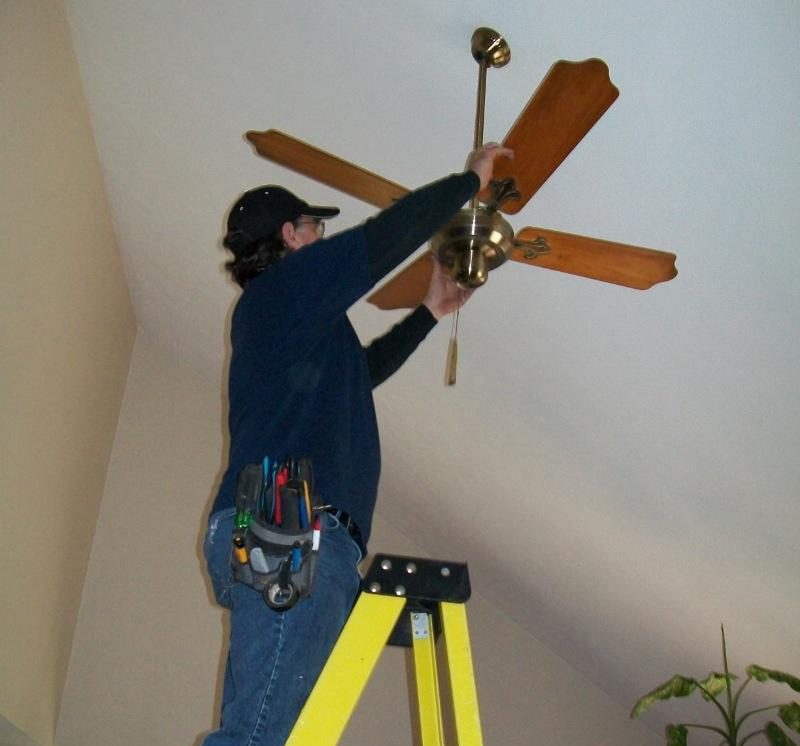
If there is no platform on the stepladder, it is better to have a person nearby to whom you can hand the removed parts or unnecessary tools.
Disassembling the lamps and decorations
Before dismantling the chandelier, it is better to remove all unnecessary trim from it. For plastic parts, it may not be critical, but glass elements greatly weigh down the design. Moreover, when working at height you risk dropping fragile parts, which you will hardly be able to find and purchase at local stores. So you must remove everything that can be taken off, so there is no interference and you have full access to the fasteners.
If the chandelier is a plate type, its plafond is usually fixed with metal clips on the outside.
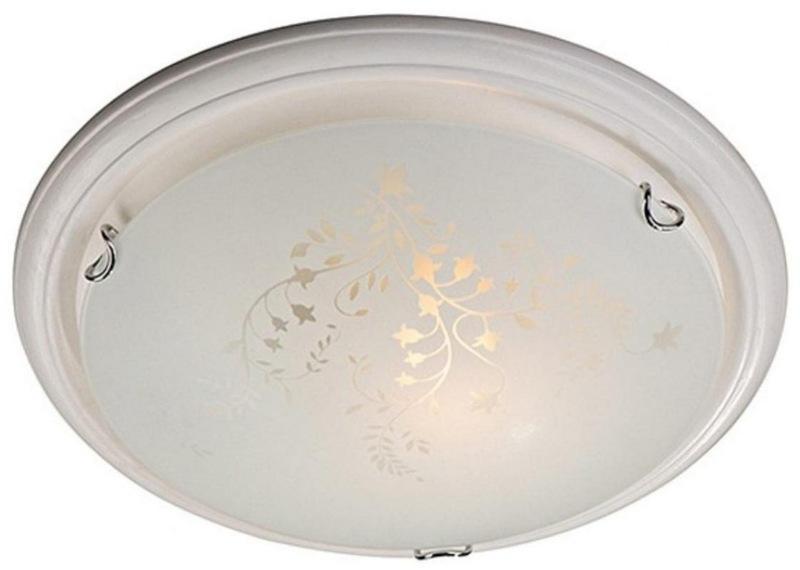
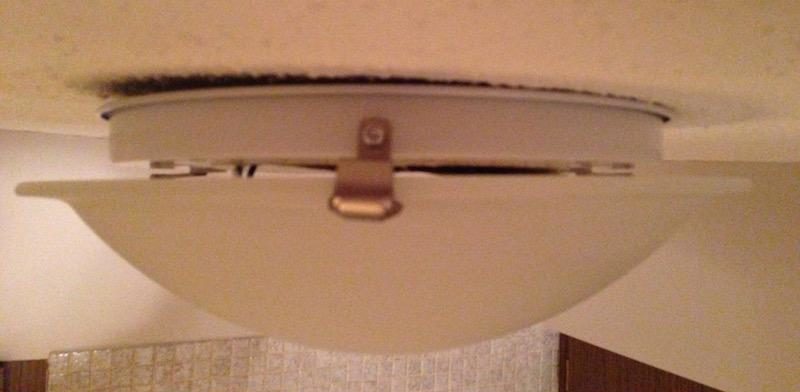
In suspended chandeliers, the lamps are in the form of a cup or bowl. Before removing these elements you will have to unscrew light sources. To fix the glasses, a special skirt on the socket is used, which must be unscrewed.
Usually this can be done by hand, but in some models the cup is so narrow that the hand does not fit into it. For these cases, there are wrenches like these.
They come with the light fixture and find a freely available device that fits a particular socketIt will be difficult, so it is better not to lose such wrenches. Unscrew the skirt without a key can only be two people: when one person using two screwdrivers turns the nut, and the other simultaneously turns the plafond counterclockwise.
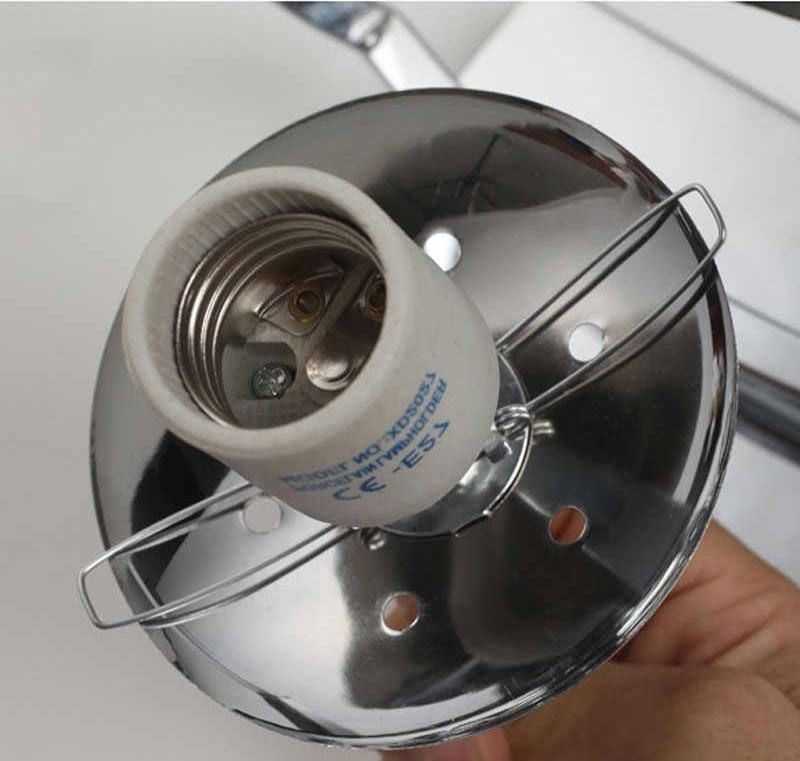
To lamp removal simply pull it towards you, the springs will be compressed and uncompressed on the released cartridge, as in the photo. Accordingly, to put the decorative diffuser back on, the springs will have to be compressed and tucked inside the hole.
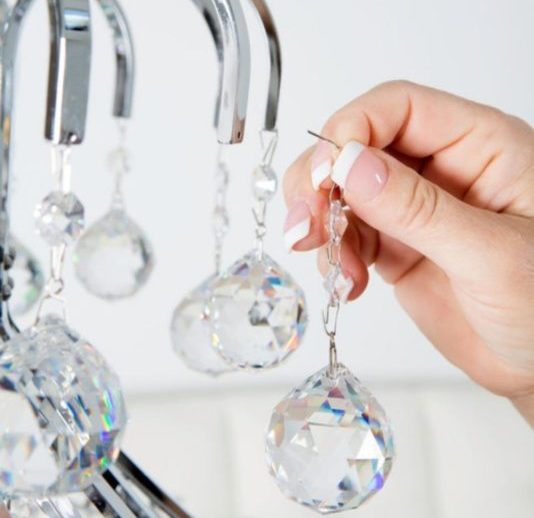
Although in most cases the decorative parts are not removable without breaking the fasteners' integrity. However, for small models it is not so critical, and the massive multilevel systems can not be removed alone without help.
After removing the plafonds and decorative elements, you must provide access to the wiring. To do this, suspended chandeliers will have to remove the cover, held by a bolt on the bar.
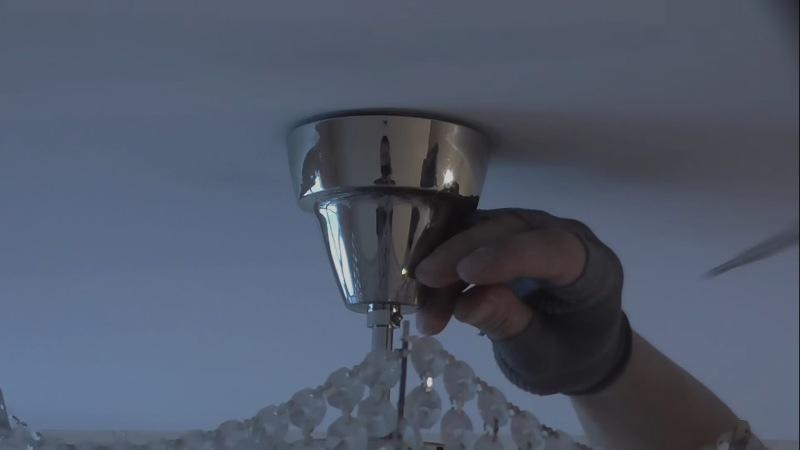
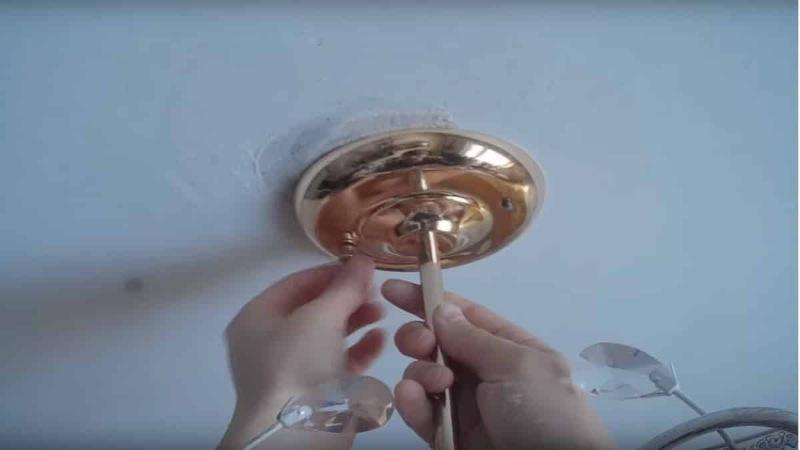
Disconnecting the wires
Once you have access to the fixture, it is necessary to disconnect the wires and it is recommended to do this before the stage of dismantling the chandelier from the fasteners, like a hook or bar. In cases with fixed caps, after unscrewing the decorative bolts, the chandelier remains hanging on the wires, so you will have to use outside help to hold the device in place. Further action is better to conduct in dielectric gloves.
There are several types of wire connections:
- Twisting . - In addition to being difficult, it is also an unreliable option. The first step is to unwind the insulation tape or cut the heat shrink tubing with a knife. When the stranding area is free, it should be unscrewed with pliers or cut with wire cutters at the base of the connection if it appears to be tinned.Such contacts must always be tinned to form a monocore, otherwise there is a risk of sparking and ignition of the braid. The presence of tin on the connection indicates, at the very least, the conscientiousness of the electrician who installed the device being removed.
- Screw terminal blocks..The screws will have to be slightly unscrewed, and the wire removed, and then unscrew the twisted contacts. Ideally, the twist should be in a metal crimp cap.Such nozzles are necessary so that the edges of the bolt will not rub against the stranded wire when it is tightened. If such a nozzle is present on the contact, the wire will have to be bitten.
- WAGO clamps.Probably the easiest and safest option. It is convenient because the levers of the clamps can be released even with one hand, while the second hand remains free or holds the chandelier, if it is already removed from the fasteners.
Of course, in all cases, it is easier to bite off the wire at the base of the contact, but sometimes the stock of free cable is limited, and with each such removal it will shrink more and more. In addition, a temporary light can be immediately connected to the free terminal without having to remove the clippings from the block or stripping the wire from the braid for twisting and insulating.
Removing the chandelier from the ceiling
When all unnecessary parts have been removed and the wire connections have been disconnected, you can begin dismantling the light fixture. For the most part, the process of removing the light fixture depends on the complexity of its mounting, existing in several variants:
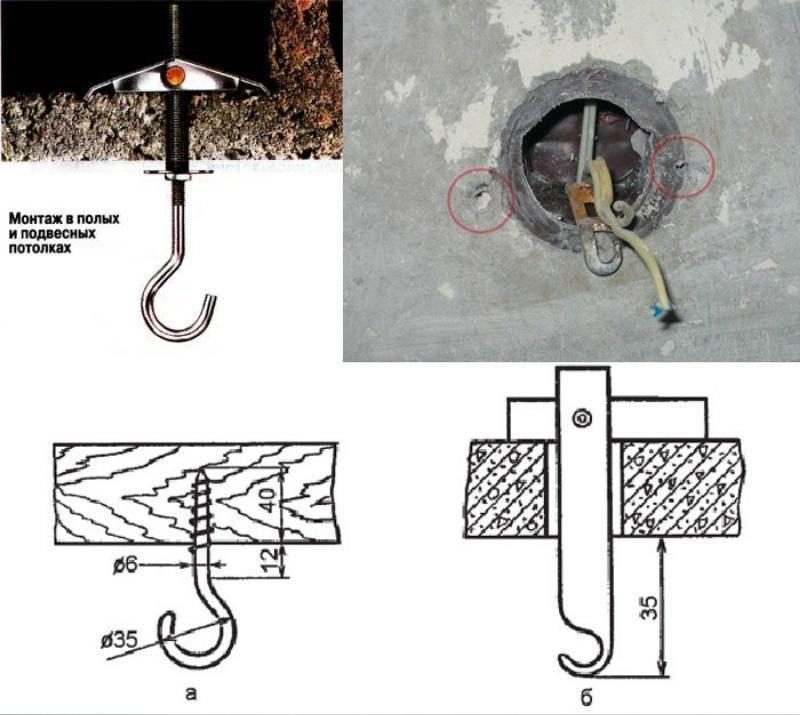
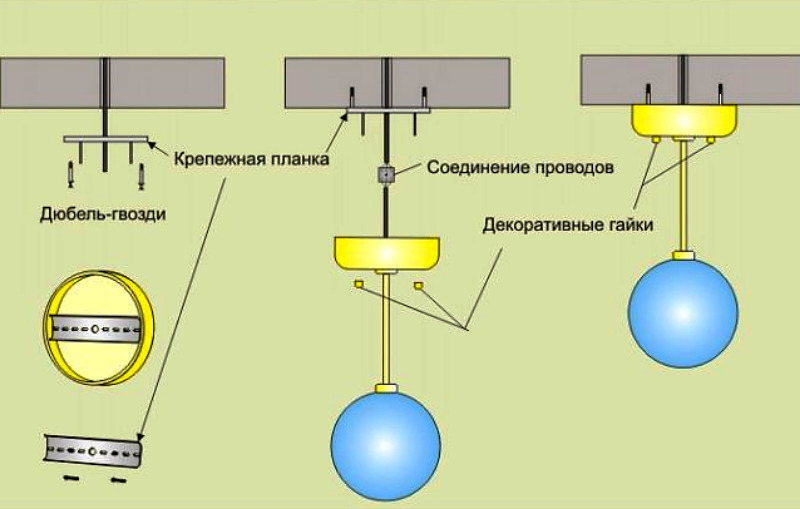
There is no need to remove the hook itself or remove the strip, unless, of course, you plan to overhaul the ceiling or replace the lamp on a fundamentally different type, with a different attachment
Suspension
Removing dowel fasteners directly from the drywall sheet, it is necessary to take into account that the holes will have to be re-drilled, since the plaster is pucked out of the old holes. New dowels will no longer sit so tightly and the chandelier can come off. If there is an embedded platform under the plasterboard, this is not necessary.
Tensioned
When carrying out disassembly activities on any stretch ceiling, you need to be careful not to accidentally cut or pierce it with sharp objects. If there are additional elements of the lighting circuit such as a choke, transformer, or ballast, it is best not to push them off the pad onto the tensioning fabric. Because of the limited space, sometimes it is very difficult to put them back in place. Pulling a stuck choke by the cable also has the risk of wire breakage and later it will be possible to get it only by removing the ceiling from the fixtures.
Concrete
The simplest option that does not require special handling. All that is needed to dismantle from concrete ceilings is to know the principle of fixing a particular model of chandelier.
Assembly and installation of a new chandelier
It is easiest if the mounting device on the new model is similar to the old one. Each fixture comes with assembly instructionsTherefore, in this case, no difficulties are foreseen. If, for example, you have to install a hooked fastener instead of the bar or vice versa, and there is no platform cage, then without drilling the ceiling is not a solution.
Be careful! Before perforating the main concrete slab, it is definitely worth studying the layout of the internal electrical wiring. If the drill gets into the hole and accidentally damages the cable, then the stretched canvas or plasterboard sheets will have to be dismantled to repair the electrical cable.
In the version with the fastener bar, you will have to remove it to adjust the bolts in the mounting holes to the new dimensions. The distance between the holes in each model is different, and too narrow or wide bar will have to be replaced by the original. With the hook fastener, there can be difficulties with the length of the hook. If necessary, it is built up with an additional section or shortened by twisting deep into the landing platform.
Wires are connected in reverse order, but it will be more correct to replace the twist or old terminal blocks with new spring or Wago system.
When Changing the type of switch from a single- to two-handle switch, you will have to run another wire to the place where the chandelier is mounted. It is correct when the switch breaks the phase, and the zero of all the bulbs is common.
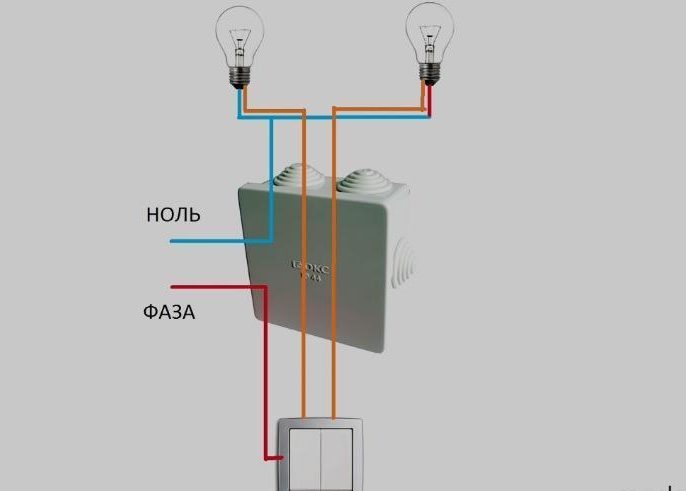
Please note! The reverse location of phase and zero on the switch is also allowed and the device will work, but then even in the off state one contact in the socket will be live, which is fraught with electrical injury when when you change the bulbs.
Recommended for viewing: How to connect a chandelier to a two-key switch
How to install temporary lighting
When doing a major renovation in a room, a light source will be needed. There are several options for solving this problem:
- Plug in a socket. with the lamp to the main cable that powers the old chandelier.Two wires 30-40 cm long are attached to the socket. The ends of the wires are stripped and connected to the terminals on the ceiling.
- When it is not possible to use the main power grid due to the replacement of wiring or capital works in dangerous proximity to the hole, it will be necessary to apply external light sources. As an option - portable building spotlightsbut ordinary table lamps will also work.To power them, you need a long power strip, most often connected to the neighbors through the window or to an autonomous power supply.You can not turn off the circuit breaker for the whole building, but disconnect the individual room on the junction box. Then the carrier is simply plugged into the socket of the neighboring room.For short-term work, battery-powered spotlights are suitable: good thing the capacity of modern batteries allows you to use them from a few hours to a day without recharging.
